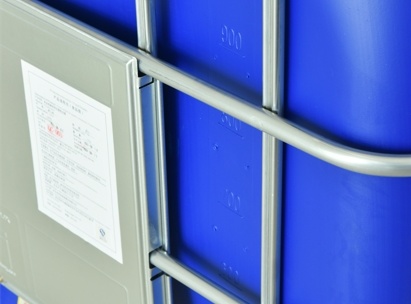11
2025
-
04
Unlocking the Secrets of IBC Totes Dimensions: A Comprehensive Guide
Understanding IBC Totes
IBC totes, or Intermediate Bulk Containers, are the unsung heroes of the storage world. These versatile containers are often seen in warehouses, farms, and factories, but what exactly makes them so special? Well, let’s dive into the nitty-gritty of IBC totes dimensions and discover why they’re an essential part of many industries!

What Are IBC Totes?
Before we get into the dimensions, let’s take a moment to understand what IBC totes actually are. Essentially, they’re large, reusable containers designed for storing and transporting liquids and granular materials. Imagine them as the big brothers of regular buckets; they hold a lot more and are built to last!
The Beauty of Their Dimensions
Now, onto the good stuff: the IBC totes dimensions. Generally, these containers come in various sizes, but the most common dimensions are 48 inches by 40 inches by 46 inches (that's about 120 cm by 100 cm by 117 cm). With a capacity of around 275 to 330 gallons (or 1,041 to 1,249 liters), they’re perfect for big jobs.
Why Size Matters
So, why should you care about IBC totes dimensions? Well, think about it: if you’re storing or transporting liquids, having the right size can save you both time and money. A container that’s too small means frequent refills, while one that’s too large could lead to wasted space and resources. It’s all about finding that sweet spot!
Different Sizes for Different Needs
Even though the standard dimensions are popular, you’ll find that IBC totes come in a variety of shapes and sizes. For instance, some are designed for specific liquids like chemicals or food-grade products, which means they might have slightly different dimensions or materials. Always check the specs before making a purchase!
Material Matters!
When it comes to IBC totes, material plays a vital role in choosing the right one for your needs. Most IBC totes are made from high-density polyethylene (HDPE), which is durable and resistant to many chemicals. However, if you’re working with hazardous materials, you might want to consider stainless steel options that provide added safety.
Transporting with Ease
Thanks to their standardized dimensions, IBC totes are easy to stack and transport. This is a huge advantage for companies looking to optimize their storage space. You can fit multiple totes in a truck or warehouse without worrying about wasted space. It’s a win-win!
Best Practices for Using IBC Totes
Using IBC totes effectively means understanding a few best practices. First off, always make sure the totes are clean and suitable for the type of material you’re storing. Second, label them clearly. Trust me, a little bit of organization goes a long way!
Safety First!
Finally, let’s not forget safety. When handling IBC totes, ensure you’re using the right equipment and following safety protocols. It’s easy to overlook these details, but they’re crucial for protecting both your products and your team.
Conclusion
So there you have it! IBC totes dimensions, while seemingly straightforward, play a pivotal role in effective storage and transportation solutions. By understanding these dimensions and their implications, you can make informed decisions that will benefit your business in the long run. Next time you see an IBC tote, remember: size matters!
ibc totes dimensions,ibc totes,ibc tote





